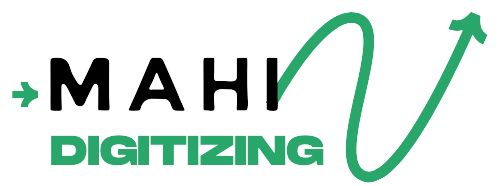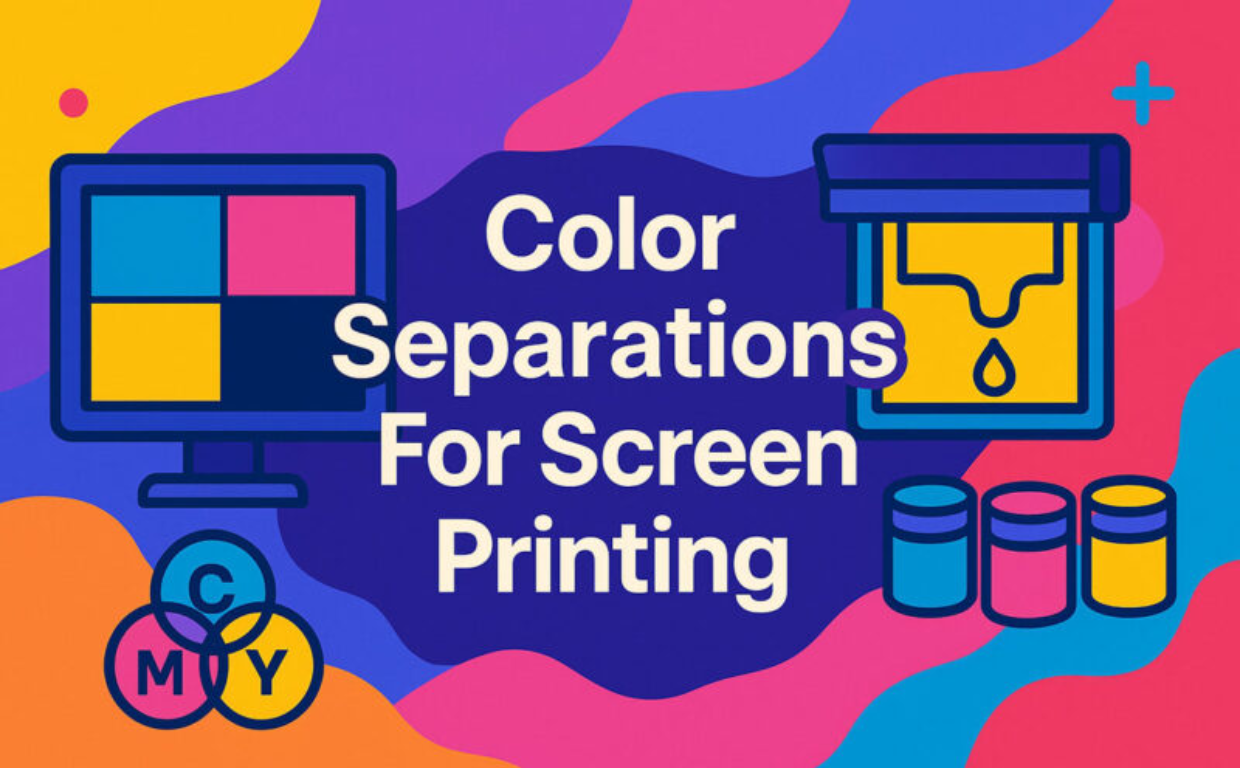Color separation is a fundamental process in screen printing, especially when dealing with vector graphics. Whether you’re launching a new apparel line or customizing uniforms, understanding how vector color separation works ensures your designs print accurately and vibrantly. At Mahi Digitizing, we break down the process in simple terms to help beginners achieve professional results.
What Is Vector Color Separation?
Vector color separation involves dividing a vector artwork into individual color layers so each one can be printed separately on apparel. This step is essential for screen printing and other traditional methods where each ink color requires its own screen.
The process allows you to isolate each part of your design by color, ensuring that the final print is vibrant, sharp, and properly aligned. It’s especially important when working with logos or multi-colored artwork.
Unlike raster separation, vector separation gives you crisp edges and scalability without losing quality. This ensures the design remains clean on anything from t-shirts to hoodies or jackets.
Design software like Adobe Illustrator or CorelDRAW is often used for this task, allowing artists to manually assign each color to a separate layer or object group.
Once separated, these vector layers are exported into formats like PDF, EPS, or AI for screen creation and ink alignment in print shops.
Color separation not only improves print clarity but also allows you to preview the final result, avoiding unpleasant surprises during the production phase.
At Mahi Digitizing, our team handles this process professionally so your vector designs are ready for perfect screen print results.
Why Is Color Separation Important?
Without proper color separation, your designs might come out blurry, misaligned, or with incorrect color mixes. This compromises the entire product’s quality and visual appeal.
Separating colors helps maintain accuracy during the screen printing process, especially for detailed or multi-color graphics. Each screen applies only one ink color, so precision is key.
This method also prevents color bleeding between layers, ensuring clear lines and distinct areas within the design, even after washing or repeated use.
It also allows printers to mix inks more effectively and apply underbase layers when needed, helping vibrant colors pop on dark garments.
For branding purposes, clean and correct separations maintain your company’s visual identity across all merchandise.
If you’re producing custom apparel, color separation helps reduce reprint costs and ensures consistent results across large batches.
This guide from Printavo also explores color separation techniques widely used in apparel decoration.
How Vector Color Separation Works
The process begins with identifying each distinct color in your vector artwork. Each color is then isolated onto a separate layer, which is used to create an individual screen for printing.
Using design software, the artist selects each shape or object and assigns it to its respective color group. This grouping forms the foundation of your separated artwork.
Once the layers are sorted, they’re converted into spot colors or CMYK channels depending on the printer’s workflow and the number of colors used in the design.
Trapping and overprinting settings are then adjusted to avoid gaps or overlaps between colors during printing. This is especially important for tight registration jobs.
Test prints or digital proofs are generated to check the accuracy of separations, including alignment, color richness, and underbase needs.
The final separated file is then exported in a print-ready format that is compatible with the print shop’s equipment, such as AI, EPS, or layered PDFs.
Request a quote from Mahi Digitizing to get expert color separations for your screen printing projects.
Tips for Beginners Starting with Vector Separations
Start with artwork that has clearly defined color zones and avoid gradients or effects unless you’re familiar with halftone conversion techniques.
Always use vector file formats like .AI, .SVG, or .PDF for editing and exporting, as they maintain edge sharpness and print quality.
Label your layers accurately during the separation process to avoid confusion later, especially when working with 4+ colors.
Use Pantone color codes or CMYK profiles to ensure consistent ink output during the print phase.
Consider the type of garment and ink you’ll be using, as certain colors require underbases or may shift slightly on dark fabric.
Keep in mind the minimum screen thickness that your printer can handle—overly detailed separations might not translate well onto fabric.
Not confident with design software? Our team at Mahi Digitizing can guide you through the entire color separation process.
Common Mistakes to Avoid
Avoid submitting low-resolution raster images for vector separation. Always start with clean vector artwork to prevent loss of detail.
Don’t forget to flatten unnecessary effects or complex gradients that won’t translate well onto screen print separations.
Failing to consider the background color of the garment can lead to design washout—use underbase layers where needed.
Skipping a test print can result in color misalignment or poor visibility on the final apparel product.
Too many colors can increase screen count and production costs. Keep your palette optimized for simplicity and effectiveness.
Using auto-separation tools without manual adjustments can lead to incomplete or poorly aligned results.
For consistent quality, always rely on a professional digitizing service like Mahi Digitizing to review or handle your separations.
Applications in the Apparel Industry
Vector color separation is used across the fashion industry, from small boutique brands to large corporate merchandise programs.
It’s commonly applied in t-shirt production, promotional wear, sports jerseys, and branded outerwear.
Designs with bold logos or multi-color graphics benefit most from sharp vector separations, particularly when printed in bulk.
Streetwear and collegiate apparel brands rely on precision separations to maintain brand integrity across different color runs.
Even subtle tone-on-tone effects can be achieved with careful separation and halftone screen setup.
With the rise of sustainable fashion, precise separations reduce ink waste and improve print efficiency, aligning with eco-conscious goals.
Explore how Mahi Digitizing’s portfolio showcases real-world applications of expert color separations.
Conclusion
Vector color separation is a foundational skill for anyone involved in screen printing or custom apparel production.
It helps maintain design clarity, color fidelity, and professional results while reducing production issues and waste.
Whether you’re an independent designer or part of a printing company, mastering this process will elevate your print quality and consistency.
Our experienced team at Mahi Digitizing can simplify your workflow by delivering print-ready files that are perfectly separated and aligned.
Let us help you turn complex artwork into sharp, screen-ready graphics that pop on every fabric type.
Get in touch today to learn more about our vector separation and apparel digitizing services.
From t-shirts to tote bags, every great print starts with great separation—start your next project the right way.

